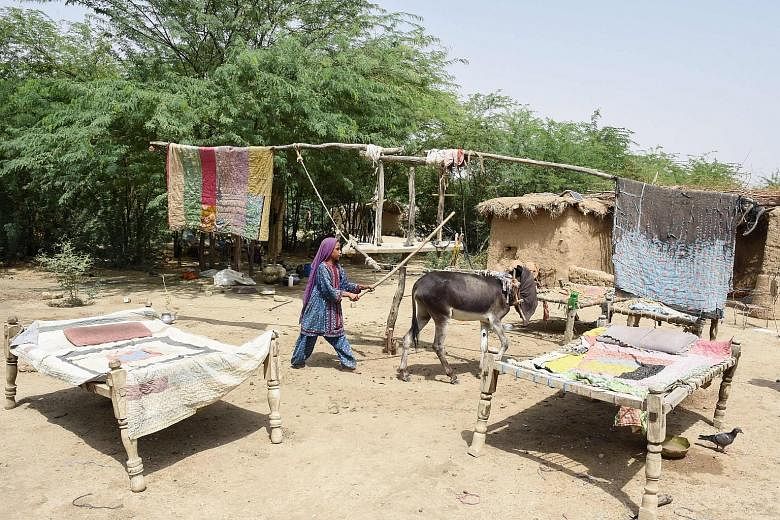SIBI (Pakistan) • After hours spent toiling under 50 deg C heat, construction worker Lakhmir Brahmani finds little relief from the sun other than a donkey-powered fan during the dog days of summer in one of Pakistan's hottest cities.
Scientists have warned that swathes of South Asia may be uninhabitable due to rising temperatures by 2100 - and in the desert community of Sibi in south-west Balochistan province, where the mercury hit 52.4 deg C this summer, it feels like they could be right.
At night, donkeys slowly crank giant hand-made fans to cool sleeping families - an indigenous remedy for the region's excruciating weather where electricity is in short supply.
"I have no house or personal land... we have no electricity," said Mr Brahmani. He hopes to relocate his family to cooler climates but lacks the money to do so.
"How could I go to (provincial capital) Quetta or other areas when the cost of a truck or tractor ride just one way is 10,000 rupees (S$132), which I hardly earn in a month?"
The subcontinent - home to one-fifth of the global population - could see humid heat rise to unlivable levels by the century's end if little is done to put the brakes on climate change, according to a study released recently.
Researchers outlined their findings in the journal Science Advances, warning of "summer heat waves with levels of heat and humidity that exceed what humans can survive without protection".
About 30 per cent of the population across the region would be exposed to the scalding temperatures, the report added.
The densely populated, rural farming regions of the subcontinent could be hit the hardest.
"Deadly heat waves could begin within as little as a few decades to strike regions of India, Pakistan, and Bangladesh, including the fertile Indus and Ganges river basins that produce much of the region's food supply," said the report.
Pakistan is among the countries most vulnerable to climate change, with its northern glaciers melting and population surging along with fast diminishing water supplies.
In the port city of Karachi, more than 20 million are also at risk. In 2015, a heatwave killed 1,200 people, nearly two-thirds of them homeless residents unable to find sanctuary indoors.
Some say the metropolis lacks the critical green spaces needed to help absorb the blistering heat. "We should plant as many trees as possible," resident Imran Hussaini said.
AGENCE FRANCE-PRESSE

